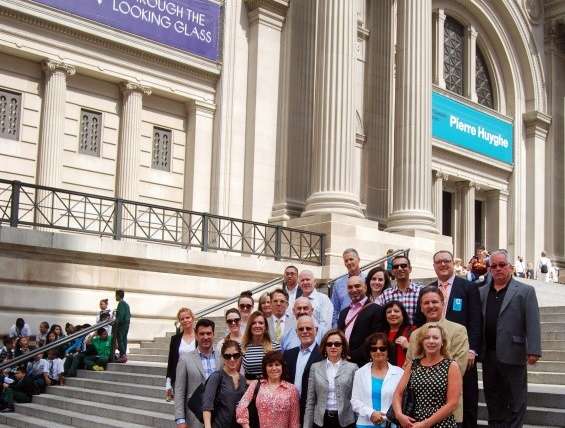“You’re my worst nightmare!”
Those were the words from the owner of a high-end men’s clothing line when he met Michael Astorino at the collective in New York several years ago. Mr. Astorino of Fabricare Cleaners was retelling the story to a group of students at the Fashion Institute of Technology as part of their course on textiles.
“There is a disconnect between the manufacturing of fine clothes and how to clean them,” Astorino explains. Designers, often in a rush to get their items to market and to save costs, don’t test or take into consideration the cleaning of their garments. As a result, clothes often get ruined in the dry cleaning process. Leather trims bleed onto fabric, shrinkage occurs, embellishments sometimes melt – these are just some of the issues that can occur if designers don’t take into account how to care for the piece before going to market.
Among the garments Mr. Astorino brought in as samples was a $3400 Christian Dior dress that bled during the cleaning and made the dress unwearable. There was also a $2000 Lela Rose gown where the ornamental trim rubbed against the silk trim leaving it frayed and pilled. Because the manufactures don’t stand behind their work, and often blame the dry cleaner, Mr. Astorino’s business ends up reimbursing the customer for these defective items.
Salvador Giardina, the instructor for the class, noted that often these problems can be prevented with some simple common sense. A leather collar sewn onto a wool coat could easily be constructed with a detachable collar. This would enable the dry cleaner to remove the collar and clean the wool coat separately not risking any color bleed or damage to the leather collar which needs to be cared for in a different process.
The high-end clothier that Mr. Astorino met at the collective came around to understanding the importance of working with the dry cleaning industry and actually ended up working with Fabricare who helped test his garments for shrinkage as well as other issues. This manufacturer was one of several who understood the value of working together as opposed to blaming each other for problems. However, Mr. Astorino pointed out that there are over 6000 different brands that come through his dry-cleaning establishment and It would be impossible to build relationships with each one of them. When Professor Giardina heard of this problem, he thought it would be best to get this message to those who will eventually be designing clothes and started inviting Astorino as a guest speaker at his classes.



